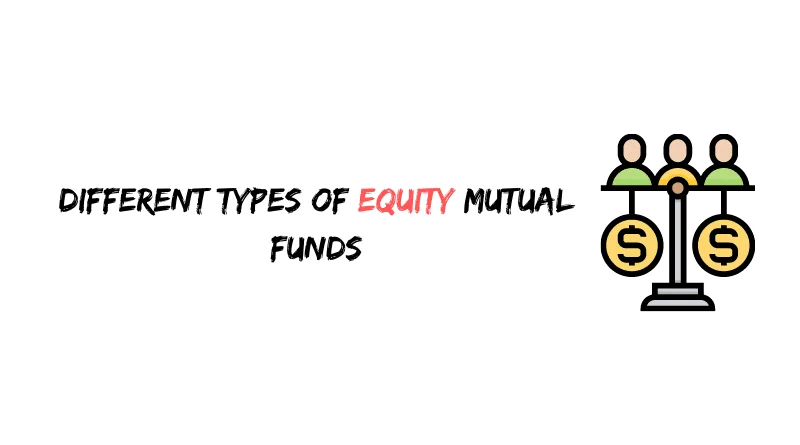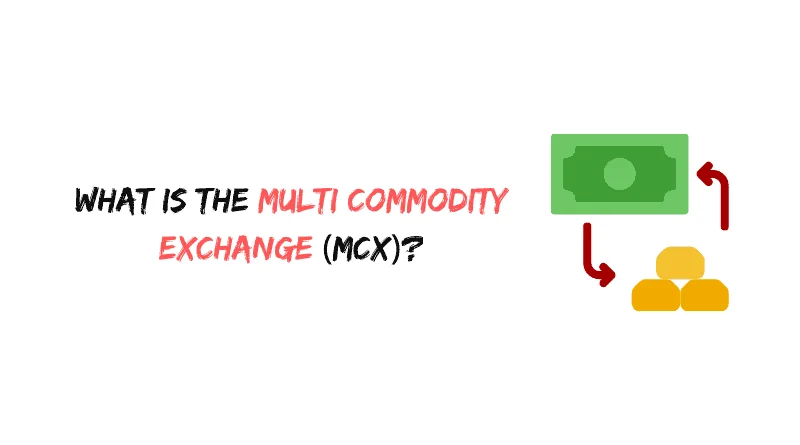A mutual fund scheme that invests primarily in company shares or stocks is known as an equity fund. Growth funds are another name for them. Types of equity mutual funds are:
Large-cap funds
Mutual funds that invest in the stocks of the 100 largest companies listed in India
Mid-cap funds
Mutual funds that invest in stocks that are between 101 and 250 of the largest companies listed in India.
Small-cap funds
Mutual funds that invest in stocks that are beyond the top 250 largest companies listed in India.
Flexi-cap funds
Mutual funds that can invest in the stocks of all companies. Usually, they mostly invest in large-cap stocks and invest a smaller portion in mid-cap and small-cap stocks.
ELSS funds
They are similar to FlexiCap in the stocks they invest in. The difference here is, that investments in ELSS funds are locked in for 3 years. ELSS funds are also called tax-saving funds, and they offer tax benefits under Section 80C.
Sectoral funds
These funds invest in stocks of one specific sector, like the pharmaceutical sector, construction sector, automotive sector, etc.
Another method to categorize equities is by the industry in which they operate.
Tata Steel and JSW Steel, for example, are both steel stocks.
This classification, however, is not absolute. It can be a subcategory of a bigger category or stand-alone.
Steel stocks, for example, are part of a wider category of equities known as metal stocks.
Of course, there are equities that aren’t only steel stocks under metal.
There might potentially be a lot of sectors that overlap.
Tata Motors, for example, is a part of the automobile industry.
Tata, however, may be classified as a logistics company because it manufactures trucks.
Some of the most common sectors are:
- Banking and financial sector
- Agriculture sector
- Construction sector
- Pharma sector
- Hospitality sector
There are a few more subcategories under the equity mutual fund category. Those are less popular, and a smaller number of investors invest in them.
Dividend stocks
These are stocks that have a history of delivering regular dividends to shareholders.
Not all companies pay dividends. Often, such companies are in the early stages of development.
Dividend-paying companies are distinct in that they are usually well-established and have a strong reputation.
Non-dividend stocks are defined as stocks that do not pay dividends when viewed from this perspective.
Cyclical stocks
Cyclical stocks are those whose prices fluctuate in response to particular cycles.
These elements could include macroeconomic, systemic, and yearly cycles, among others.
Agricultural companies that are affected by the monsoons are an example of cyclical stocks.
These cycles do not have to be one year long. Cycles can last anywhere from a few weeks to several years.
Non-cyclical stocks are those that do not follow any recognized cycles.
Safe stocks
In the world of stocks, “safe” is a difficult term to grasp.
Investors are well aware that there is always a risk associated with the stock market.
As a result, investors are constantly on the lookout for “safe” stocks.
The truth is that there is no such thing as a 100% safe stock.
In truth, investors must come to terms with the fact that no investment is fully risk-free; even the safest of assets (gold, FDs, etc.) come with risks.
Everything is simply a matter of taking a higher or lower risk.
Stocks that are stable and have a good track record are considered safe.
These businesses are often older and may pay out dividends on a regular basis.
4 Investment strategies
Growth stocks
Growth stocks are those that are projected to expand at a significantly faster rate than the market as a whole.
The majority of growth stocks do not pay a dividend. Many others are also unable to make a profit.
Investors are drawn to such equities because they believe they will grow in value in the future.
Investing in growth stocks is also regarded as significantly riskier.
Many investors who identify as growth investors swear by these types of stocks.
Value Stocks
Stocks that appear to be underpriced are known as value stocks.
Many investors look at profits, debt levels, valuation, and other factors to determine if a stock’s price is too low (according to them).
They acquire the stock if the price is below what they believe it should be.
The idea is that these investors will purchase a stock at a lower price.
Value investors are investors who swear by this technique.
It’s important to remember that neither term has a precise definition.
As a result, there is no obvious distinction between a growth stock and a value one.
Momentum Investing
Momentum investing is a method in which investments are made in response to market trends. Momentum traders would buy stocks ahead of a prospective rise, sell them before the markets fell, and then repurchase them at a lower price later. Short selling is the practice of selling first and then buying afterward.
Cost-Averaging Strategy
This technique entails making frequent market investments over a long period of time. The cost-averaging approach does not believe in putting money in the market all at once but rather in placing money in the market over a period of time.
Bluechip company stocks and defensive stocks, both of which are expected to expand steadily, are the most popular sorts of stocks in which people want to invest on a regular basis.
Also, check Different types of Debt and Hybrid Mutual funds
Equity mutual funds are, in general, riskier than debt mutual funds.
When compared to debt mutual funds, equity mutual funds have generally provided superior returns.
This isn’t to say that every equity mutual fund subcategory is riskier than every debt mutual fund subcategory.
When it comes to equity mutual funds, the usual rule is that you should not invest in any form of equity fund for less than three to four years.
You should also invest for a longer period of time in risky equity funds. You can buy any of these funds from any Demat account. Here are some of the best apps for stock buying.
Here’s a list of equity funds in increasing order of their risks:
- Large-cap funds
- Flexi-cap funds & ELSS funds
- Mid-cap funds
- Small-cap funds
- Sectoral funds
Here’s a list of debt funds with increasing risk:
- Liquid funds
- Ultra-short-duration funds
- Low-duration funds
- Short-duration funds
Since hybrid funds invest in both equity and debt, their risk levels are between equity and debt.

















